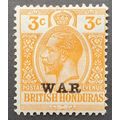Aircraft - Avro Shackleton AEW2 early warning patrol aircraft - postcard
- Condition : Used
- Dispatch : 2 Days
- Brand : None
- ID# : 122803414
- Quantity : 1 item
- Views : 1334
- Location : United Kingdom

- Seller : justthebook (+1703)
- Barcode : None
- Start : Wed 04 Dec 2013 05:56:36 (EDT)
- Close : Run Until Sold
- Remain : Run Until Sold
Checks/Cheques
 for 1 item(s) edit
for 1 item(s) edit
Shipping Calculator
More Listings from This Seller view all
Seller's Description
- Postcard
- Picture / Image: Avro Shackleton AEW2 - airborne early warning patrol aircraft
- Publisher: After the Battle, Plaistow
- Postally used: no
- Stamp: n/a
- Postmark(s): n/a
- Sent to: n/a
- Notes / condition:
Please ask if you need any other information and I will do the best I can to answer.
Image may be low res for illustrative purposes - if you need a higher definition image then please contact me and I may be able to send one.
------------------------------------------------
Postage & Packing:
UK (incl. IOM, CI & BFPO): 99p
Europe: £1.60
Rest of world (inc. USA etc): £2.75
No additional charges for more than one postcard. You can buy as many postcards from me as you like and you will just pay the fee above once. (If buying postcards with other things such as books, please contact or wait for invoice before paying).
Payment Methods:
UK - PayPal, Cheque (from UK bank) or postal order
Outside UK: PayPal ONLY (unless otherwise stated) please. NO non-UK currency checks or money orders (sorry).
NOTE: All postcards are sent in brand new stiffened envelopes which I have bought for the task. These are specially made to protect postcards and you may be able to re-use them. In addition there are other costs to sending so the above charge is not just for the stamp!
I will give a full refund if you are not fully satisfied with the postcard.
----------------------------------------------
Text from the free encyclopedia WIKIPEDIA may appear below to give a little background information (internal links may not work) :
*************
The Avro Shackleton was a British long-range maritime patrol aircraft for use by the Royal Air Force and the South African Air Force. It was developed by Avro from the Avro Lincoln bomber. It was originally used primarily in the anti-submarine warfare (ASW) and maritime patrol aircraft (MPA) roles, and was subsequently adapted for airborne early warning (AEW), search and rescue (SAR) and other roles from 1951 until 1990. It also served in the South African Air Force from 1957 to 1984. The type is named after the polar explorer Sir Ernest Shackleton.
The aircraft was designed by Roy Chadwick as the Avro Type 696.[2] It was based on the Lincoln bomber and Tudor airliner, both derivatives of the successful wartime Lancaster heavy bomber, one of Chadwick's earlier designs which was the then current ASW aircraft.[3] The design took the Lincoln's centre wing and tail, Tudor outer wings and landing gear and a new wider and deeper fuselage; it was powered by four Rolls-Royce Merlin engines. It was initially referred to during development as the Lincoln ASR.3.
The design was accepted with Air Ministry specification R.5/46 written around it. The tail as adopted differed from the Lincoln. The Merlin engines were replaced with the larger, more powerful and slower-revving Rolls-Royce Griffons with 13 ft (4 m)-diameter contra-rotating propellers, which created a distinctive engine noise and added high-tone deafness to the hazards of the pilots due to their positioning in relation to the cockpit. The Griffons were necessary because of the greater weight and drag of the new aircraft over the Lincoln[4] and they provided equivalent power to the Merlins but at lower engine speed, which made for greater fuel efficiency for the long periods in the denser air at low altitudes that the Shackleton was intended for when hunting submarines – known as ""loitering"" in RAF parlance – possibly several hours at around 500 feet or lower. This also made for less stress and wear, and hence reliability problems, for the engines. If Merlins had been used they would have been needed to run at comparatively high power settings for hours at a time once a submarine contact had been detected. Using conventional propellers would have needed an increase in propeller diameter to absorb the increased power and torque of the Griffons, which was not possible due to limitations in undercarriage length and engine nacelle positioning of the Lincoln wing; the contra-rotating propellers gave greater blade area within the same overall propeller diameter.
When the Shackleton was being designed, the ""Battle of the Atlantic"" was still being fought and all possible submarine targets (German U-boats), were diesel-electric powered types that had very limited underwater endurance. The time underwater being limited by both the air available for the crew to breathe, and the battery power remaining to drive the submarine's underwater electric motors. While submerged, it was incapable of travelling any great distance away from where it was detected. Any aircraft could then call up friendly convoy escort surface ships who could subsequently deal with a submerged target in the normal way, (with depth charges aimed using their own ASDIC (sonar) sets). Hence for the Shackleton, endurance in terms of the length of time it could spend in the air – as opposed to all-out range – was of prime importance. Once a submarine had been detected, it might be necessary for the aircraft to remain over the last sighted position of the submarine all day (or night), preventing it from surfacing and escaping at its higher surface speed. All the time the submarine was prevented from surfacing, the crew's breathable air was being exhausted, and the batteries were consuming power; eventually the submarine would be forced to come up for air. It could then be attacked by the aircraft itself, using its own air-dropped depth charges.
In the case of a submarine recharging its batteries and replenishing its air while submerged using a snorkel, this could be detected by the aircraft using ASV radar, and the submarine attacked as normal, with the added benefit that in visual conditions, location of the German snorkel mast made the submarine's underwater position obvious, aiding depth charge aiming.
The Avro design was ordered to Air Ministry specification R.5/46 as a replacement for the long-range Liberator.
...
Front line MR 1 aircraft were delivered to Coastal Command in April 1951, making their operational debut during the Suez Crisis.
All marks suffered from using the Griffon engines — thirsty for fuel and oil, noisy and temperamental with high-maintenance needs. The engines of MR 2s needed top overhauls in 1961 every 400 hours and went through a spate of ejecting spark plugs from their cylinder heads. It was not unusual to see an engine changed every day in a unit of six aircraft. They were constantly on the cusp of being replaced, but the potentially beneficial Napier Nomad re-engine did not happen.[citation needed]
Shackletons were used in the Aden Protectorate during the Radfan Emergency against rebel tribesmen in Colonial Policing Operations. Leaflets would be dropped warning the tribes to vacate their properties which would then be bombed after they left.[8][9]
The need to replace the Shackleton was first raised in the early 1960s. The arrival of the Hawker Siddeley Nimrod in 1969 was the end for the Shackleton in most roles but it continued as the main SAR aircraft until 1972. The intention to retire the aircraft was then thwarted by the need for AEW coverage in the North Sea and northern Atlantic following the phased withdrawal of the Fairey Gannet aircraft used in the AEW role by the Fleet Air Arm that began in the early 1970s. With a new design not due until the late 1970s, the existing AN/APS-20 radar was installed in modified Shackleton MR 2s, redesignated the AEW 2, as an interim measure from 1972. These were operated by No. 8 Sqn, based at RAF Lossiemouth. All 12 AEW aircraft were given names from The Magic Roundabout and The Herbs TV series.[6] The development of the British Aerospace Nimrod AEW3 replacement dragged on and the eventual successor to the Shackleton did not arrive until the RAF finally abandoned the Nimrod AEW 3 and purchased the Boeing E-3 Sentry in 1991.
type=printed postcards
theme=transportation
sub-theme=air
number of items=miliatary aircraft
number of items=single
period=1945 - present
postage condition=unposted
Listing Information
| Listing Type | Gallery Listing |
| Listing ID# | 122803414 |
| Start Time | Wed 04 Dec 2013 05:56:36 (EDT) |
| Close Time | Run Until Sold |
| Starting Bid | Fixed Price (no bidding) |
| Item Condition | Used |
| Bids | 0 |
| Views | 1334 |
| Dispatch Time | 2 Days |
| Quantity | 1 |
| Location | United Kingdom |
| Auto Extend | No |




















